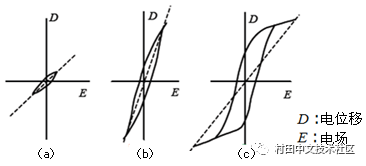Electronic capacitors must be known for eliminating the voltage characteristics of the power line ripple design
Author: Murata Manufacturing Components Business Division Zakipedia
The variation in the actual electrostatic capacitance of a capacitor under direct current (DC) or alternating current (AC) voltage is referred to as the voltage characteristic. A smaller change in capacitance indicates better voltage characteristics, while a larger change suggests poorer performance. When capacitors are used in electronic devices for purposes like filtering power supply ripple, it's crucial to account for these voltage characteristics during the design phase.
DC Bias CharacteristicsThe DC bias characteristic refers to the reduction in actual electrostatic capacitance when a DC voltage is applied to a capacitor. This effect is commonly observed in high dielectric constant multilayer ceramic capacitors (MLCCs) made with barium titanate-based ferroelectrics, conductive polymer aluminum electrolytic capacitors, conductive polymer tantalum electrolytic capacitors, film capacitors, titanium oxide capacitors, and MLCCs used for temperature compensation with calcium zirconate-based paraelectric materials. This phenomenon is rarely seen in C0G-type capacitors (see Figure 1).
For example, when a 1.8V DC voltage is applied to a 100µF MLCC rated at 6.3V, the capacitance may decrease by about 10% for an X5R type, resulting in an actual value of 90µF. In contrast, a Y5V type might see a 40% drop, reducing the effective capacitance to 60µF.

Figure 1: Capacitance Change Rate – DC Bias Characteristics (Example)
When a DC voltage is applied to a barium titanate-based ferroelectric material, the electric displacement (D) initially increases linearly with the electric field (E). As the electric field grows, spontaneous polarization aligns with the field, leading to a higher dielectric constant and increased capacitance. However, once polarization saturates, the dielectric constant decreases, causing the capacitance to drop (see Figure 2).
Therefore, when selecting an MLCC, it’s important not to rely solely on the nominal capacitance value from the datasheet. Instead, consider the DC voltage that will be applied to the circuit, measure the actual capacitance, and adjust your design accordingly. The lower the DC voltage, the less impact this characteristic has. With modern semiconductor chips like FPGAs and ASICs operating at voltages above 1V, the DC bias effect becomes negligible in many applications.

Figure 2: State of Ferroelectric Ceramic Under Voltage Application
AC Voltage Characteristic IssuesThe AC voltage characteristic refers to the change in actual electrostatic capacitance when an AC voltage is applied. This behavior is similar to the DC bias effect and is primarily observed in high dielectric constant MLCCs using barium titanate-based ferroelectrics, conductive polymer aluminum electrolytic capacitors, conductive polymer tantalum electrolytic capacitors, film capacitors, titanium oxide capacitors, and paraelectric MLCCs. This phenomenon is rare in C0G-type capacitors (see Figure 3).
For instance, applying a 0.2 Vrms AC voltage at 120 Hz to a 22µF MLCC rated at 6.3V can reduce its capacitance by around 10% for an X5R type, bringing it down to 20µF. In the case of a Y5V type, the reduction could be as high as 20%, resulting in an actual capacitance of 18µF.

Figure 3: Capacitance Change Rate – AC Voltage Characteristics (Example)
Ferroelectric ceramics contain domains where the spontaneous polarization (Ps) is randomly oriented. When an electric field is applied, these domains align, increasing polarization until saturation occurs. Even after the field is removed, some polarization remains, creating residual polarization. To cancel this, an opposite electric field is required. At higher AC voltages, this non-linear behavior causes waveform distortion, making it unsuitable for linear material definitions (*1). However, the relative dielectric constant (εr) derived from measured capacitance reflects the average slope of the hysteresis curve (dashed line in Figure 4).

Figure 4: DE Hysteresis Curve of Ferroelectrics
*1: Linear materials exhibit a proportional relationship between stress and strain, meaning their properties remain consistent under varying deformation.
Temperature And Humidity Test Chamber
Temperature And Humidity Test Chamber,Temperature Humidity Test Box,Test Machine For Aerospace,Constant Temperature Humidity Tester
Wuxi Juxingyao Trading Co., Ltd , https://www.juxingyao.com